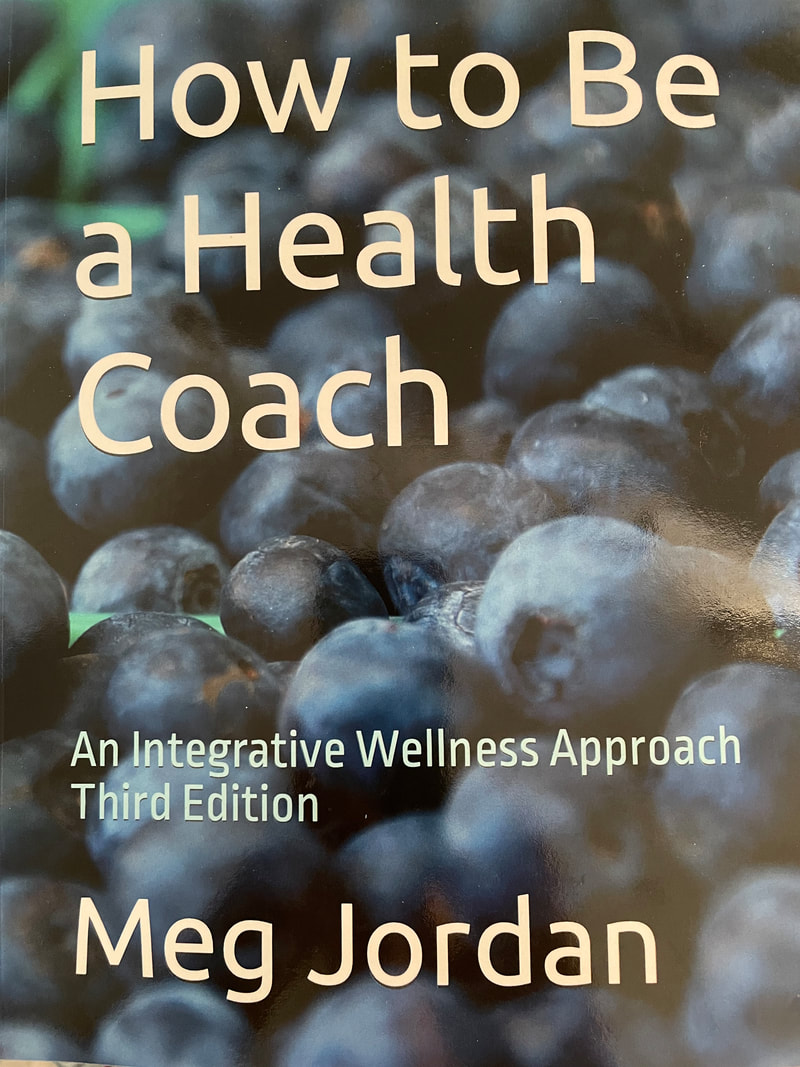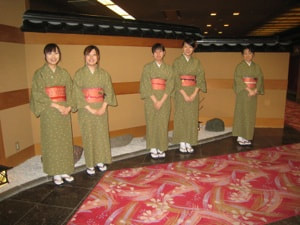 It's finally here -- the long awaited 2022 edition of the acclaimed text How to Be a Health Coach: An Integrative Wellness Approach, Second Edition, used in over 100 schools and training programs and in several countries. A comprehensive educational text for health coaching:
James and Janice Prochaska, authors of Changing to Thrive Conveys essential skills and knowledge for an outstanding curriculum. Michael Arloski, Masterful Health and Wellness Coaching Meg embodies the heart and soul of the health coaching world. Magnificent! Nancy Gillette, MA, Executive Coach, Adaptive Exercise Specialist Integrative Practitioner Podcast. I'm interviewed by Integrative Practitioner magazine editor Avery St Onge about the importance of cultural and racial/ethnic awareness in health coaching, and how to incorporate social determinants of health into the coaching dialog. That is probably controversial since it expands the professional health coach's scope of practice...but if there's anything we've learned from the pandemic, it's that these issues are of utmost importance to curb the illness and mortality rate among the poorest, most under-resourced individuals. This podcast is meant to enlighten, but it may challenge your concepts of what supportive alliances are all about in the health field.
Listen The NBHWC invites you to attend a Connect & Learn on
DEI Awareness for Coaches February 9, 2022 12-1 PM PST Moderated by Simbonika SpencerFeaturing Meg Jordan, Meckell Milburn, Felicia Permenter, and Melanie Prasad-DehaneyThis session is designed for health and wellness coaches who are committed to creating inclusive experiences across diverse groups of race/ethnicity, gender, sexuality, identity, intersectionality. If you’ve been hesitant or worried about how to gain skills in DEI work as it relates to coaching, this session is for you. Bring your questions to a panel that will model how to hold conversations across difference, don’t miss this opportunity. We want to emphasize that we’re not experts, but we’re just willing to hold the often-times difficult conversations for the greater good for all. Join us! Objectives:
When we think of healthcare personnel in this pandemic, we most likely think of front-line emergency and ICU professionals. But because those who fare the worst are most often people with chronic conditions such as obesity and diabetes and chronic respiratory illness, there truly is an important role for health coaches, too. This peer-review article published in the SAGE Journal Global Advances in Health and Medicine, August 2021, proposes how this wider role for health coaches may ameliorate this and future contagions. Jordan, M. A. (2021). The Role of the Health Coach in a Global Pandemic. Global Advances in Health and Medicine. https://doi.org/10.1177/21649561211039456 As the co-morbidities and other chronic conditions related to COVID-19 among individuals and families in low income communities are worsened by dual forces (lifestyle/behavioral choices and ingrained structural inequities), adding the support of certified health coaches to build trust, provide more convenient access to address vaccine hesitancy, and dispel falsehoods, is an effective means for advancing health and wellbeing. Group coaching and one-on-one coaching can work in tandem with public health initiatives for reducing chronic disease burden and addressing social determinants of health (SDoH). Skills are identified in coaching SDoH with expanded cultural competencies for health coaches. Conclusion: Certified professional health coaches can make a positive impact on general risk reduction of chronic diseases within ethnic/racial minorities, thereby supporting population health in facing future contagions with greater health resilience. Scientists Propose Living to 150 Years Old is Not Far Fetched Anymore Living to 150 – just the idea of it struck me as not only impossible but undesirable. Why on earth would I want to live past 100, if the next 50 years were filled with disability and dementia? But the idea has tremendous appeal to David Sinclair, PhD, longevity researcher at Harvard and author of Lifespan: Why We Age and Why We Don’t Have To. When I discovered that many of my doctor and nurse friends were reading Sinclair’s bold vision of the future, I decided I had to see how this latest longevity book compared to the current rash of anti-aging ideas pitched today. It was the endorsements that first grabbed my attention. Three pages of names – from Dean Ornish to Mark Hyman to Dale Bredesen--extolling Sinclair’s treatise as the last health book you’ll ever have to read, with comments like “stepping on the moon,” “a tour de force,” “the most important message of our time.” Wow. I was under the impression that a gentler, kinder zeitgeist had entered the cultural conversation with expert critiques of over-medicalization and appeals for comfort care over end-of-life heroics. What’s this renewed interest in living so long? Aging has never been popular in the U.S. We seem culture-bound to buy any product or trend that promises to halt our telomeres from fraying or keep our gut microbiome from raising hell. We ponder anti-aging advice from celebrities like Suzanne Somers as she pushes bioidentical hormones. From obsessive paleo diets to centenarians living in Blue Zones, I’ve been reporting the latest breakthroughs on the aging front for several decades. Remember Aubrey de Grey? The longevity researcher with the Rip van Winkle beard? He announced 20 years ago that his rejuvenation alternative would make him as old as Methuselah. Then when scientists discovered how pesky free radicals damaged DNA, inventor Ray Kurzweil started swallowing about 120 antioxidant supplements a day, giving rise to legions of tech-savvy biohackers. Now, according to Sinclair, those theories of why we age prematurely are outdated. Antioxidants do indeed scavenge those pesky free radicals that damage chromosomes, but now it appears that free radicals also do some good. Basic science has moved forward. A New Theory of Aging His new “theory of everything” is an information theory that supports the entire theme of Lifespan—that aging is a disease. The book, written with Matt LaPlante, gives credit to over 60 international scientists who are each contributing a part of that information puzzle. Sinclair calls this collection of findings and extrapolated hypotheses the 9 Hallmarks of Aging. (see sidebar) What Actually Makes Us Age? Here are the 9 factors that when combined, make us “age” 1. Telomere attrition 2. Mitochondrial dysfunction 3. Stem cell exhaustion 4. Altered intracellular communication and production of inflammatory molecules 5. Loss of proteotosis (protein maintenance) 6. Senescent cell accumulation (cells that don’t fully die off, wander around where they shouldn’t, causing problems) 7. Deregulated nutrient sensing (decreased ability to monitor nutrients like sugar, lipids, amino acids) 8. Alterations to the epigenome (chemical compounds and proteins that can attach to DNA and direct such actions as turning genes on or off, controlling the production of proteins in particular cells) 9. Genetic instability (genetic mutations that interfere with repairing DNA, i.e., BRCA1 and BRCA2) Now with groundbreaking but complex research findings at the nano level, it’s harder for the average health-conscious consumer to follow. With instantaneous genome mapping, and amazing CRISPR technology allowing scientists to replace one gene at a time, scientists can venture deeper into cellular mysteries. Researchers can monitor several new pathways of aging, like the mTOR pathway, which regulates how cells can be dormant (quiescence), or die off (senescence) or reactivate as stem cells. Scientists just discovered a sort of “aging dance” of DNA loops, known as TADs (Topologically Associated Domains). They have figured out how to remove troubling, cancer-inducing methyl groups off of chromosomes, (hence the expression at Functional Medicine meetings, “If you’re a poor methylator, you might be a cancer-maker”). Very recently they are able to manipulate certain enzymes to reprogram the way our cells respond with characteristic youthful markers instead of typical aging. Have I lost you yet? This is what it’s like plowing through Sinclair’s book – truckloads of scientific jargon and biochemistry. Finally, there was one chapter that had me hooked. One of Sinclair’s post-docs had a major breakthrough in longevity research when he crushed a mouse’s optic nerve, then injected three of the four enzymes (known as Yamanaka factors) into a virus, then injected the virus into the mouse, and witnessed over time, the nerve growing back, restoring sight. Downright miraculous, declared Sinclair’s team. (We owe a lot to lab mice.) Optic nerves don’t just regenerate, but his lab managed to demonstrate that they can. Glaucoma and vision loss are serious conditions of aging eyeballs. Wading through the compilation of biochemistry is this book made me realize why it garnered the over-the-top endorsements. Still, we want the bottom line and ask: Ok, but what can I do now? Sinclair is careful to not make recommendations in his book but he talks about putting his elderly father on the same personal regimen with good results, namely: a plant-based diet, no desserts, exercise, one gram of NMN (nicotinamide mononucleotide), one gram of metformin and assorted other supplements. While anecdotal tales don’t make for good science, Sinclair hopes to conduct a first human clinical trial within a few years, not on extending lifespan, but on glaucoma. Activating Your Longevity Pathways Science has taken great strides into understanding new pathways of aging. Perhaps the most pertinent finding is that mice and humans (maybe other mammals) have built-in longevity pathways that we can be activated with either a molecule called NMN or NR, nicotinamide riboside. Metformin, a prescription-only pharmaceutical drug prescribed for diabetes, also seems to favorably impact the built-in longevity pathways. Doctors have known for some time that patients on metformin don’t seem to get Alzheimer’s or certain cancer or heart disease at the same rate as others their age. What makes good science? The longevity mystery has just become more complex and the jury is still out as to whether this new cluster of information is actually extending life. In fact, Charles Brenner, PhD, the scientist who discovered NR, told me, “Sinclair is a great storyteller, but his hypothesis is not testable. He doesn’t have a falsifiable hypothesis.” Science makes progress by working with falsifiable hypotheses—these are statements that have the capacity to be proven wrong, an essential feature of the scientific method. For example, the statement: take these supplements and your life will be longer. So does that mean that the opposite is true? Not taking these supplements will shorten your life? Uh, no, you can’t prove that so you can’t call it good science. But that hasn’t stopped Sinclair or dozens of others excited about research on sirtuin, the family of proteins that regulate cellular health. There are seven types of sirtuins and at least four are known metabolic regulators that control gene expression. Sirtuins are to this decade what antioxidants were to the ‘90s—the latest darling in the quest for causal factors of aging. Brenner discloses that he has a vested interest in the patented substance, nicotinamide riboside, commonly called NR. Both NR and the molecule that Sinclair takes, NMN, are precursors to a fundamentally important molecule, nicotinamide adenine dinucleotide (in its oxidized form abbreviated NAD+), which is in every cell of your body, but starts to decline at about age 40 or 50, depending on how deleterious your lifestyle is (i.e., sun damage, chemo/radiotherapy, poor diet, sedentary). Brenner has other problems with Sinclair’s ideas. Promoting wide scale use of metformin does not strike him as sound. “If people are looking to age better, we know that high levels of physical activity, mental and social engagement are positively associated with wellness. We have recently learned that metformin blunts improvements in physical fitness due to exercise. My reading of the literature says that healthy people should not take metformin.” Brenner also warns that “we don’t know what’s in some of the NMN capsules going around. We know for a fact there’s a company with an NAD-boosting product that adds caffeine, nicotinamide, and Vit C, and perhaps unknown contaminates. The caffeine alone might account for why people report feeling energized.” Others contain ingredients that may boost cholesterol levels. “The only supplements people should take are ones with proven safety trials from clean, inspected labs.” 5 Things That May Increase Your Longevity 1. Fast Intermittently. – Try to be a little hungry each day. Stop any late-night snacking. Then go from your dinnertime to eating a late lunch— skipping breakfast. Aim for 12 hours of fasting to start. Stretch to 16, or try two days a week with 500 calories or less. 2. Eat a primarily plant-based diet. Cutting back on meat means that you are lowering the amount of amino acids, which your body recognizes as hunger, creating slight starvation. This is all about not over-activating the mTOR pathway. If it’s overactive, you’re at greater risk for heart disease, Alzheimer’s, and certain cancers. 3. Give up your thermonuclear comforts. Try to be shivering cold at least once a day. Scientists don’t fully understand why being cold is linked with turning on longevity pathways. I found this one to be wildly unpopular among my women friends, who may all have compromised thyroids. 4. Exercise, of course. Adjust it to high intensity interval training (HIIT). After a brief warmup, force your heart rate to climb as you fully exert for 30 seconds, then recover back to near-resting levels for 90 seconds. Repeat 6 to 8 cycles. This will take less than 15 minutes, 2–3 times a week. 5. Boost your NAD levels with a proven nicotinamide riboside, such as Niagen, or NMN. So that’s the good news. We alter the epigenome and thus, genetic expression, according to Sinclair, when we shiver, are hungry, and move a lot. Contemporary life is not so great for us, since it dampens this long-life genetic activity. Really? I can hear my epidemiology colleagues saying, “ridiculous.” The strides in public health, sanitation, clean water, agricultural and protein production, infection control, vaccination, first responder networks, have all extended the average lifespan, primarily by reducing infant mortality. This leads me to conclude that for us health-conscious folks who have a pretty good life and want to be around to enjoy it fully without disability, dementia or despair, these lifestyle adjustments might be worth the discomfort. Aging with grace, dignity and a youthful spirit – that seems to be a personal choice, no matter what you swallow. # # #  I served on one of first vaccination teams in December at a SNF with an active COVID outbreak, setting up the mobile clinic in an outdoor courtyard, on a chilly day. We took no breaks because we didn’t want to don and doff our PPE--a feat of endurance. We set up four stations: registration/counseling, vaccination tables, recovery area. I noted how smoothly my RN colleagues, all former or current ICU or ER nurses like myself, moved into action together, even though we never met till that morning. It was a familiar, no-nonsense rhythm of providing what was critically needed, and a welcomed break from the social-political obsessions I experienced most days of 2020. When the public health official arrived with the refrigerated case of Pfizer-BioNTech COVID-19 vaccine, we gathered around to open it. Wow. We beheld the rows of tiny purple-capped vials, and a wave of emotion swept over the entire team. Maybe because these were among the first vaccines to arrive in Marin County, maybe because it was the day before Christmas Eve, and we were huddled together in a SNF courtyard strung with paper Christmas decorations, but there was no denying that we felt like something precious and rare and long sought after was in our hands. It was viewed as a very privileged and sacred moment, a chance to end this epidemic of sickness, death and loneliness. I gingerly picked up one vial with a double gloved hand and joked, “Look at us, we look like we’re gazing at baby Jesus, as if a Christmas miracle had arrived!” And true to form, we burst out laughing, a typical response of front-line health care personnel to break the tension and get back to work. You might wonder if we were there to vaccinate the frail elderly residents. No, just the staff. California follows the CDC recommendations to first vaccinate the most at-risk which aren’t the non-ambulatory residents, but the staff—the nursing aids, orderlies, cooks, cleaners and janitors of nursing homes and SNFs. These folks are often new immigrants, people of color with higher rates of chronic disease, who work for low wages due to minimal education or lack of documentation. They work hard holding onto the only job they could get without specialized credentials, and they do their best in the poorest of conditions. They are most at-risk from an epidemiological viewpoint, taking public transit back and forth to crowded living conditions, frequenting stores or working extra shifts at essential service jobs, in contact with hundreds of people each week, and also going room to room at the SNF, sometimes in more than one facility. But it wasn’t always easy to convince staff to get the shot. While a few gladly rolled up a sleeve, several heard about a “lack of testing” or that “it gives you the disease.” We had to listen patiently, try to dispel fears and misinformation. Once a threshold of staff started lining up, the tide was turned and we jabbed away. While most people I talk with are thrilled to know that the vaccine is available for everyone, there are still those who are fearful or hesitant, and in those cases, I offer this moment of mindful reframing. Consider transmuting that worry with the current fact-based reality, that the world is participating in a massive coordination to bring a remarkable vaccines everywhere…the culmination of the work of thousands--scientists, virologists, clinical investigators, immunologists, epidemiologists, refrigerant engineers, delivery and dissemination experts, independent medical advisory boards, government and private enterprise partners, dedicated public servants, extraordinary public health leaders—and it is amazing that it winds up in the hands of volunteers like me willing to reach out and ask you to roll up your sleeve for a healthier, safer, happier world than what we’ve experienced since the start of 2021. Remember when energy drinks appeared two decades ago with enough sugar and caffeine in one can to fuel an NFL team for a season? Health conscious individuals took one sip of the first tachycardia-inducing formulas and switched to water with lemon. Last year, a sample of 72 college students by Global Medicine Enterprises discovered that fit-minded millennials and Gen Zs would rather stain their stainless steel water bottles with a little fruit juice than stay hopped up on Red Bull for the rest of their anxious lives.
While the big soda makers like Pepsi and Coca-Cola compete for a dominant share in the still-growing energy drink market by offering healthier alternatives, the American Beverage Association discovered from a recent focus group that people were still up for energy drinks as long as they featured safe, healthy and natural ingredients. The respondents also thought there was too much caffeine and too much High Fructose Corn Syrup in most drinks. I generally prefer water during and after my workouts. But there are times when I need an energy boost because I've overdone it, and then I look for an energy drink that meets my desire to only put healthy ingredients in my body. The latest offerings from a host of forward-thinking companies feature low sugar or no sugar, definitely no High Fructose Corn Syrup, and a wide array of desirable nutrients. Have you seen this summer's explosion in the refrigerated grocery shelves for chocolate flavored reishi mushroom drinks and lemonade with ashwagandha? A dizzying choice of high-powered, flavored Kombucha drinks (mojito flavored!), now sporting alcohol labels take up an entire end-cap at my local grocery store. One of the first energy drinks on the market, Monster Energy, was introduced by Hansen Beverages in 2002. Now owned and marketed by Monster Energy on 1 Monster Way in Corona, CA, the company, which also brings you Monster Sports, has come out with drinks that have zero or low sugar offerings, and others that feature 100 percent of daily value for viatmin B-12, niacin, riboflavin, and vitamin B-6. Many of their drinks contain Taurine, L-Carnitine and Inositol, which take part in energy transcription factors for optimal metabolism, but not more Inositol than you would find in an infant formula, comparing ounce-for-ounce. So it's possible today, thanks to consumer pressure, to quickly get your hands on a bad ass energy drink, featuring slow-brewed green tea that the legendary Chinese herbalist Emperor Shennong would gladly imbibe. The good news here is that it's apparently safe for you to return to energy drinks. I'm still hoping that the makers eliminate the sucrolose, a sugar alcohol that gives half of us some mild GI distress, but I understand the need to make an 8-ounce drink that boasts only 20 calories. The hunt continues for energy drinks that add a touch of monkfruit instead of sugar alcohols. Your Global Medicine Hunter is still on the hunt, but less thirsty New youtube video on children and amphetamines. We are addicting our children to speed. It all starts with a questionable diagnosis of ADHD, and then the prescription gets written for Adderall or Ritalin. Soon a child learns that the only way to be acceptable or loved is to take drugs that alter his or her behavior. The problem is reaching epidemic proportions. There are safer ways to achieve focus and clarity: sleep, diet, stress management, effective communication skills, exercise and some botanical and nutrient support. I was happy to narrate this hard-hitting video, and write some supportive material at www.wellcorps.com. Published NASM Winter 2016
WELLNESS: From Movement to Profession Bigger than ever, with a place for you to engage. By Meg Jordan, PhD, RN, CWP For over half a century, the concept of wellness has infiltrated communities, schools, workplaces and health care throughout the U.S. and abroad, inspiring people to embrace healthier lifestyles. Wellness has been a movement, profession, and industry, but most of all, wellness continues to evolve as a dynamic process that has now inspired four generations. History of Irony and Inspiration While wellness as a concept is often criticized as a soft science with insufficient data or questionable ROI, the irony is that its founding philosophy arose out of cold, hard statistics. The father of wellness is widely acknowledged to be a pioneering biostatistician who worked at the fledgling National Office of Vital Statistics from 1935 to 1960. Like another genius working in a clerical capacity,1 Halbert L.Dunn, MD, PhD, must have had his stroke of insight while wrestling with the mundane. He witnessed the unmistakable trends in chronic disease due to poor health habits, such as the growth of heart disease and pulmonary disease during the peak years of per capita tobacco use in the U.S. His book, High-Level Wellness (1961), spurred the next generation of health care professionals and social scientists to shift the lens from sick care to prevention, and eventually to salutogenesis—the actual creation of health.2  Why do so few do what they know is right? U.S. adults get failing grade in healthy lifestyle behaviorBy David Stauth, Contact: Ellen Smit, 541-737-3833 or ellen.smit@oregonstate.edu This story is available online: http://bit.ly/1UJsRVU CORVALLIS, Ore. – Only 2.7 percent of the U.S. adult population achieves all four of some basic behavioral characteristics that researchers say would constitute a “healthy lifestyle” and help protect against cardiovascular disease, a recent study concluded. In this study, researchers from Oregon State University and the University of Mississippi examined how many adults succeed in four general barometers that could help define healthy behavior: a good diet, moderate exercise, a recommended body fat percentage and being a non-smoker. It’s the basic health advice, in other words, that doctors often give to millions of patients all over the world. Such characteristics are associated with a lower risk of cardiovascular disease as well as many other health problems, such as cancer and type 2 diabetes. We've been under the radar and would like to re-introduce ourselves...
The Health Medicine Forum is a group of health practitioners from all disciplines who are dedicated to the collaborative exploration, practice and advancement of the emerging discipline of Health Medicine. We serve to inform, educate and connect those interested in a holistic and integrative approach to medicine, one that is focused on prevention and person-centered care. Health Medicine, it's about body, mind and spirit. It's nutrition, prevention, and usually not about convention (although it can be). It's about nature and things natural, psychology and energy medicine. And sometimes, it's even about pharmaceuticals, because they do some things right and have brought us some miraculous cures, on occasion. Finally, it's about friendship, community and learning about ourselves. There's a lot to learn, so come join us at HMF!  (EarthTalk, E Magazine----)How is it that global warming could cause an increase in health problems and disease epidemics? Do we have any evidence that it is already happening? -- Jim Merrill, Provo, UT Global warming isn’t just bad for the environment. There are several ways that it is expected to take a toll on human health. For starters, the extreme summer heat that is becoming more normal in a warming world can directly impact the health of billions of people. “Extreme high air temperatures contribute directly to deaths from cardiovascular and respiratory disease, particularly among elderly people,” reports the World Health Organization (WHO). “In the heat wave of summer 2003 in Europe, for example, more than 70,000 excess deaths were recorded.”  (SAN FRANCISCO---) Neuroscience used to be the subject where geniuses flourished and the rest of us grimaced--but not anymore. Neuroscience is hot, and everybody from app designers to massage therapists claim to apply the latest findings The last decade of neuroscience research has produced an explosion of novel approaches to track the bidirectional interfaces between the brain and all other cellular structures. Some of the neuroscience research heads toward cognition and behavior, and winds up informing the expanding field of Positive Psychology. This is where you'll find evidence-informed practices for mindfulness, meditation, breath work, and other forms of stress reduction  Sitting Disease is the new (rather unfortunate) term from the CDC for the deleterious effects of prolonged sedentary behavior. As part of the National Health and Nutrition Examination Surveys of 2,286 adults, researchers at Northwestern University found that each additional hour per day spent sitting can increase disability risk by 50 percent. That in is troubling enough without their additional finding – that the increase in disability occurs no matter how much exercise they got. Many people try to fit a half-hour walk or hour at the gym a few times a week into their desk job lifestyle. But that amount of exercise cannot undo the unhealthful impact of nine out of 14 waking hours spent in uninterrupted sitting.  Medical Tourism: Sick Rx for Global Energy Consumption SAN FRANCISCO---) Two social forces—the increase in medical tourism and the imperative to decrease fossil fuel consumption—are at loggerheads. For a privileged group of health-seekers considering a wellness holiday or face lift at a destination spa or hip replacements, it's easy to hop on an international flight to Rio or Mumbai or Singapore. For over a decade, that has been the prerogative of the elite traveler, who figures their contribution to the global economy offsets any bump in greenhouse gas emissions. That logic might be hard to argue since new job markets have sprung up in formerly impoverished areas. But what if the masses—the thousands of millions below the super-affluent—decided that distant lands were the places to see doctors, get health care, buy elective surgeries, and enjoy wellness tune-ups? What does that do for efforts to curb fossil fuel production and excessive energy consumption? |
Archives
April 2022
Categories |

 RSS Feed
RSS Feed